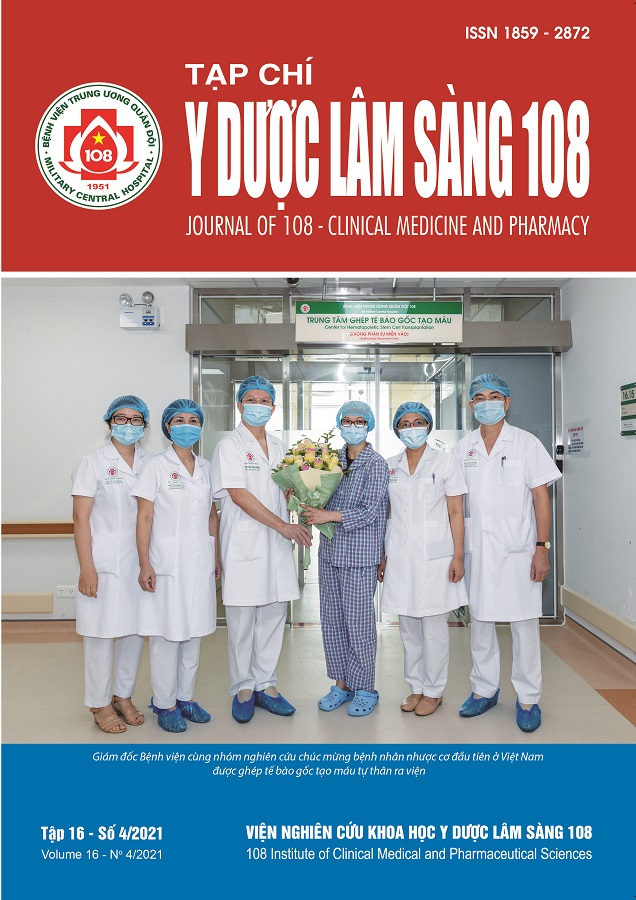The analgesic effect of pericapsular nerve group (PENG) block in intertrochanteric fracture
Main Article Content
Keywords
Abstract
Objective: To evaluate the analgesic of pericapsular nerve group block in patients with intertrochanteric fracture. Subject and method: 30 patients experience intertrochanteric fracture indicated for locking plate, by spinal anesthesia. Pericapsular nerve group block by lidocaine 1% using ultrasound guidane was performed 30 minutes before spinal anesthesia with sitting position. Evaluation of VAS score at before and after PENG blockade, pain and flexion when spinal anesthesia sitting position, complication. Result: The VAS score both in dynamic state and at rest at 5 minutes, 10 minutes, 15 minutes, 20 minutes, 25 minutes, 30 minutes after PENG blockade were smaller than that before performace, p<0.05. 26/30 (86.7%) patients were sitting without or slight pain, 29/30 (96.7%) patients were good and average flexion during spinal anesthesia, no record complication. Conclusion: PENG block influenced on the analgesia during positioning for spinal anesthesia and improved patient position.
Article Details
References
2. Alrefaey K & Mohamed A (2020) Pericapsular nerve group block for analgesia of positioning pain during spinal anesthesia in hip fracture patients, a randomized controlled study. Egyptian Journal of Anaesthesia 36(1): 234-239.
3. Short AJ, Barnett JJG, Gofeld M et al (2018) Anatomic study of innervation of the anterior hip capsule: Implication for image-guided intervention. Regional Anesthesia and Pain Medicine 43(2): 186-192.
4. Utsav ARL (2020) Pericapsular nerve group block: An excellent option for analgesia for positional pain in hip fractures. Case Reports in Anesthesiology- Hindadu.
5. Grión A, Peng PWH, Chin J et al (2018) Pericapsular nerve group (PENG) block for hip fracture. Reg Anesth Pain Med 43: 859-863.
6. Josh Luftig et al (2020) A new frontier in pelvic fracture pain control in the ED: Successful use of the pericapsular nerve group (PENG) block. The American Journal of Emergency Medicine 38(12): 2761. 5-9.
 ISSN: 1859 - 2872
ISSN: 1859 - 2872
